by Pietro Desideri, volunteer onboard the Nadir
«Crack» stems from my experiences and emotions aboard the sailing ship Nadir, as a volunteer with the German association RESQSHIP, during a monitoring, search and rescue mission. It is a five segments story that comes out every Wednesday in November, starting today: an infamous day for the renewal of the agreements between Italy and Libya. «Crack» is part of what I would like to say to Fortress Europe.

Thinking back to the monitoring, search and rescue mission we concluded a month ago, flash images come to mind, very brief but dense snapshots. M., supporting us in distributing life jackets. The two people who, despite the fatigue of the journey and the high seas, pull the ropes to keep their boat side by side with ours, and allow the transshipment. The interaction with the Italian coast guard. The nights spent at the helm of the ship, drinking ginger tea. I try to re-establish an order among the images, and dedicate this first article to situating them.
We have been operating in the central Mediterranean, in the stretch of sea between Africa and Europe, surrounded by Italy, Malta, Libya and Tunisia. It is the world’s deadliest migration route: since 2014 alone, more than 20,000 deaths 1 were officially registered. People who died because of a European policy that criminalizes migration and, when it would have a duty to coordinate rescue operations, often obstructs them.
We were aboard Nadir, a motorized sailing ship: most of the time it goes under sail, when needed the engine is added. “Small!“, I thought the first time I saw her, anchored at the dock, in Malta. I already knew she was not even 18 meters long, but perhaps I had internalized the dimensions of the better-known civil fleet ships, those big friendly giants like Geo Barents, Open Arms Uno, Sea-Watch 4, which tend to the length of a soccer field. About sailing, I knew little or nothing, and I worried because the only knot I knew was to tie my shoes. One doubt, never openly stated, I did have: why do we want to do monitoring, search and rescue at sea, with a sailboat? It has its own style, sure, but I mean, couldn’t we have equipped ourselves better?
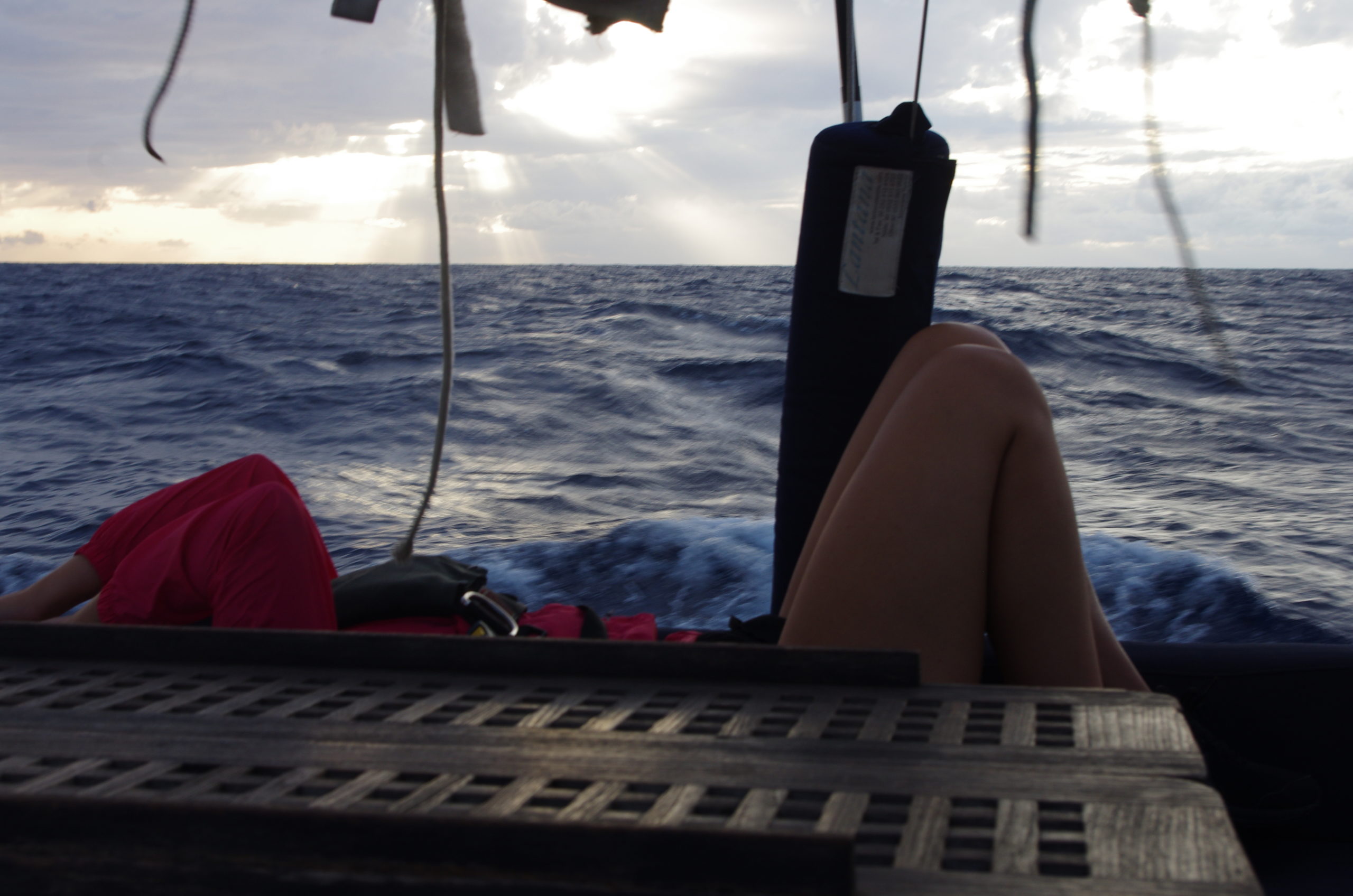

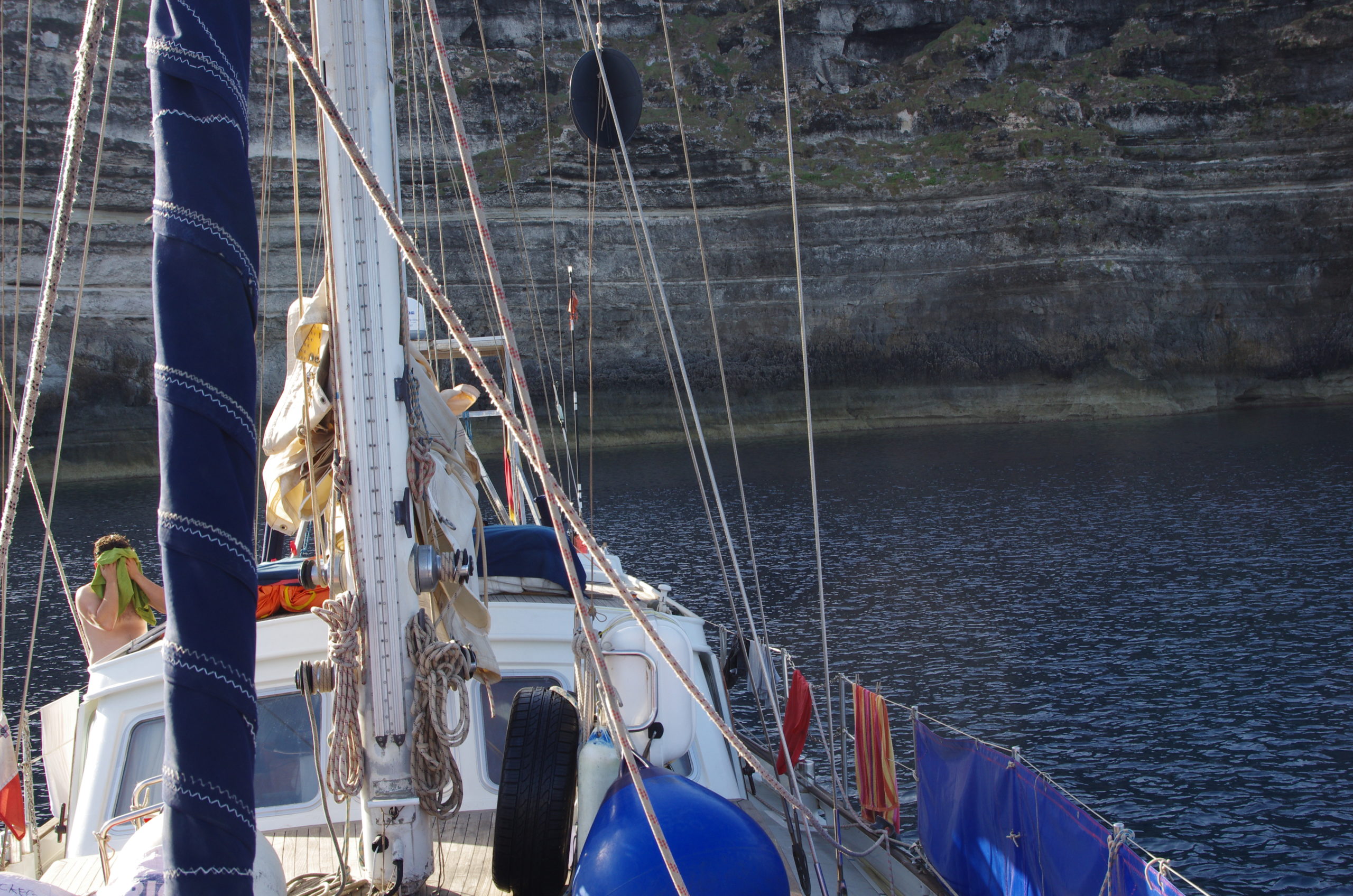
In fact, the Nadir’s sails allowed us to conduct the mission effectively at a fraction of the conventional costs: in the 15 days we were at sea, most of the time we were sailing. I learned that the main sail was essential to give the boat stability (despite tilting it, and I won’t tell you about the effects on our stomachs). I then learned that the genoa, the sail in the front, gave speed, and that the jib is the smallest sail (I always called it by the German term I was taught, “fock“). To this capacity to pick up wind, we added the motor if we needed to go fast, when we were aware of a boat in trouble.
To ensure vigilance night and day, our small crew had organized themselves into rotating shifts. It means to stay in a continuous stand-by, as we need to always be ready to respond to requests for help. At sea, communications go through open radio frequencies, and we were always tuned to channel 16, which is dedicated to alerts. It is on 16, in fact, that a vessel in distress, or a vessel sighting another in distress, launches a mayday, or mayday relay. When we were not on our watch shift, you would often find us in our bunks, trying to restore energy.
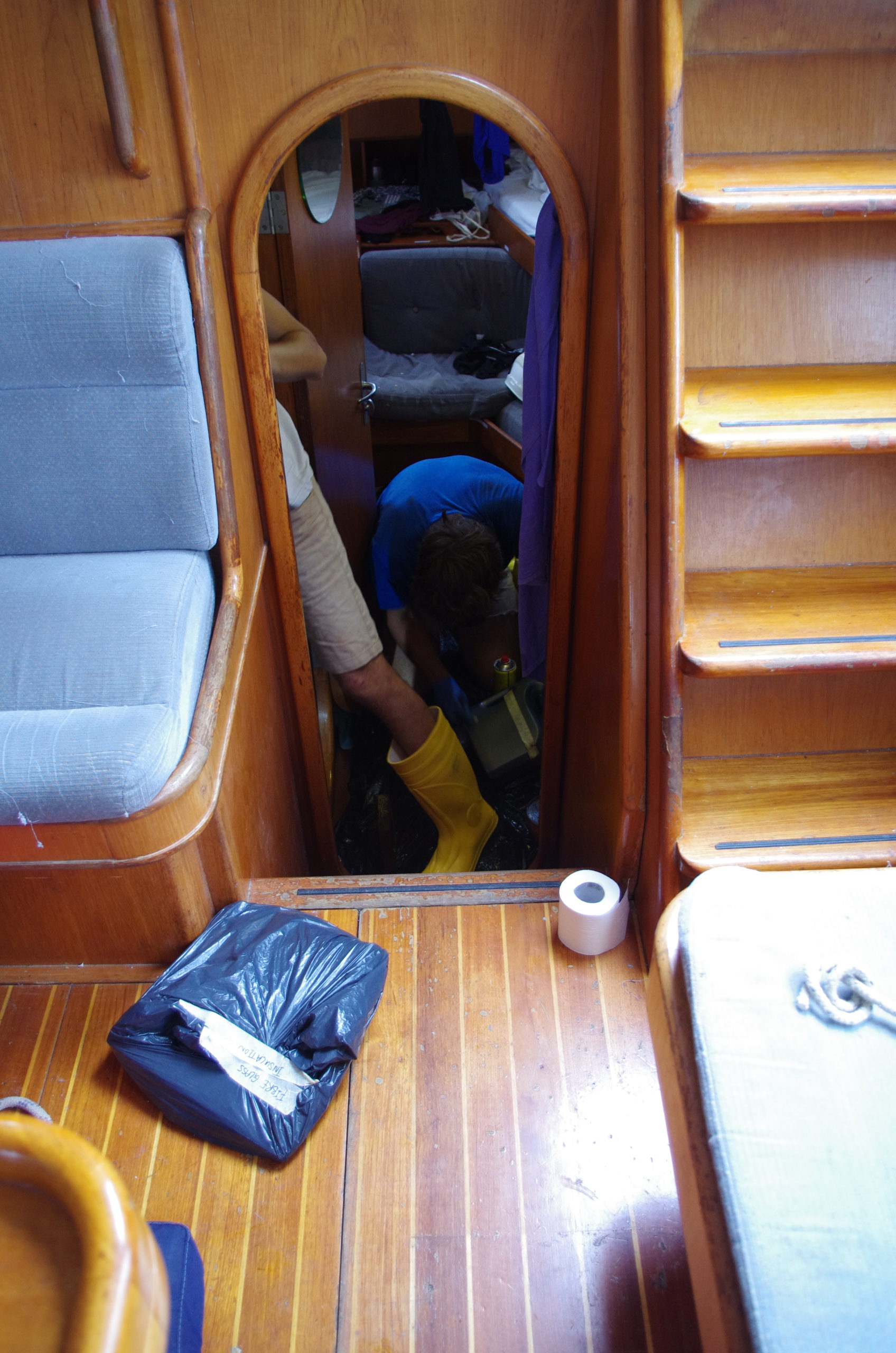
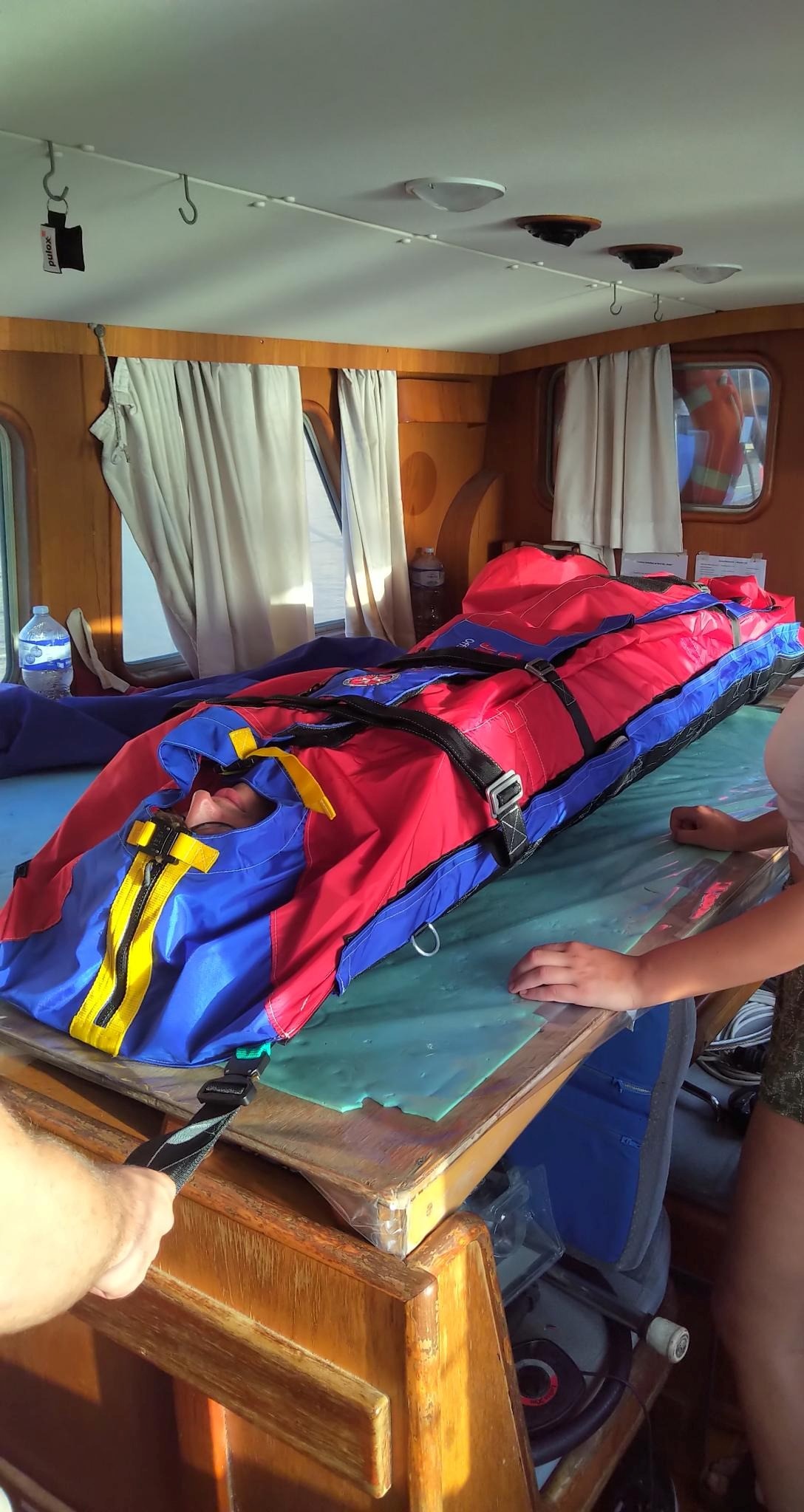
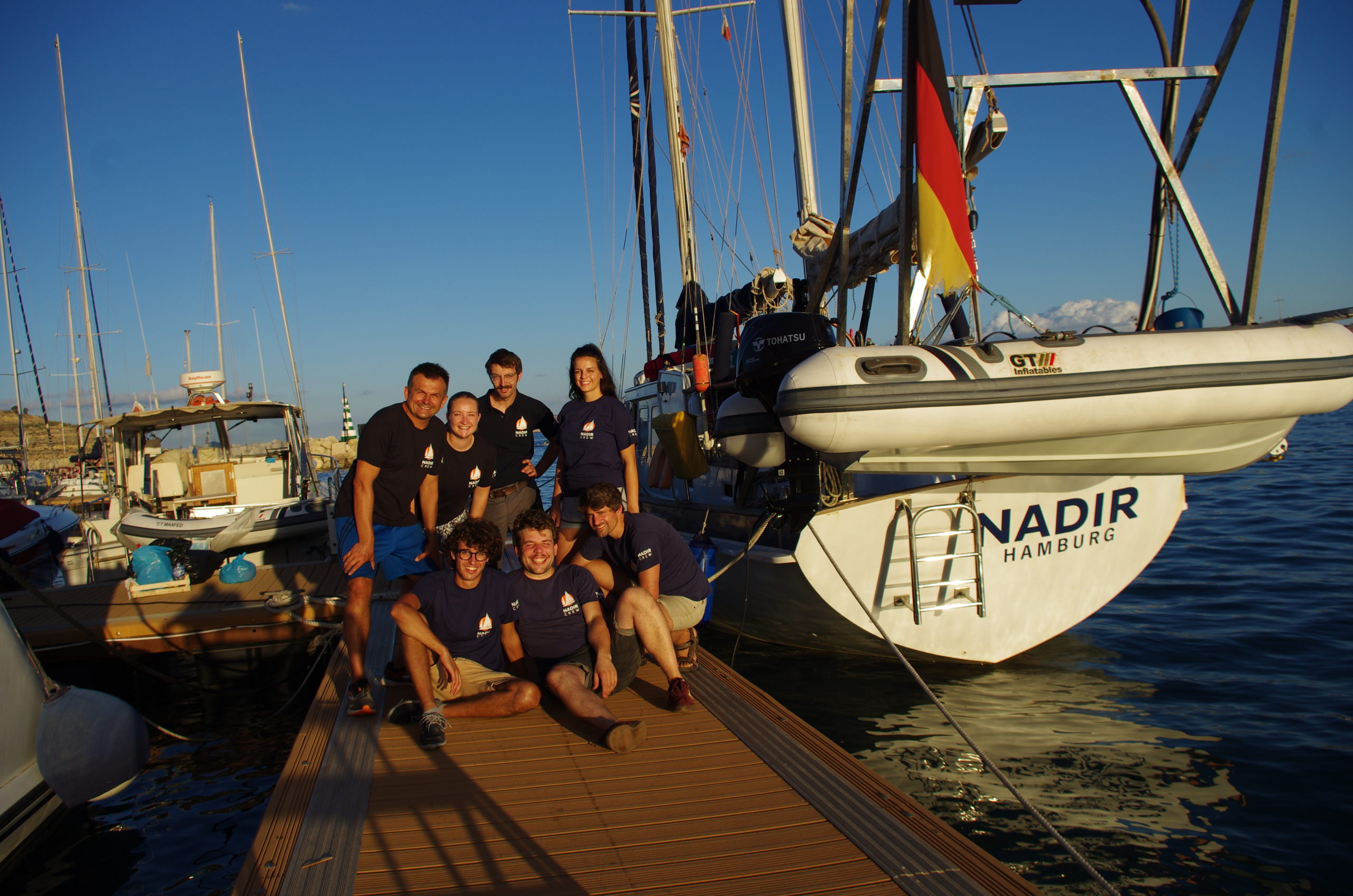
Good thing the crew was there, because if you have to do one thing only for 15 days, it’s nicer to do it with other people you feel connected with. There were seven of us: Abbi, the doctor, who could make you laugh even with seasickness. Gio, the electrician, who loves raw onions. Linda, deckhand (a cross-supporting role), who recycled overripe bananas into one banana bread after another. Niels, whom I occasionally called “pirate” because he liked stormy seas, an expert in navigation. Gerd, the co-captain, he managed to finish a book on India in two days. Johannes, the captain, but also a machinist, plumber, electrician, paramedic, computer technician, etc. Then there was me, as communications coordinator, also very deft at getting hot coffee burns-it happens, especially in high waves. Besides ourselves, we were able to rely on the land crew who provided round-the-clock logistical, medical and legal support.
The roles I have listed are only the main ones, because the tasks onboard were too many to allow for a neat one-person-one-role split. To face the workload, spontaneous and effective cooperation had been established among us, which was also reinforced by daily debriefs, an important mechanism for listening to each other. The dynamics on board made me experience the Nadir as a horizontal space. With the exception of the captain we were all volunteers with RESQSHIP, the German-based grassroots association that owns the ship.
In the next article I talk about the first rescue we performed, about SAR zone, how we experienced it, compared to what it should be.


